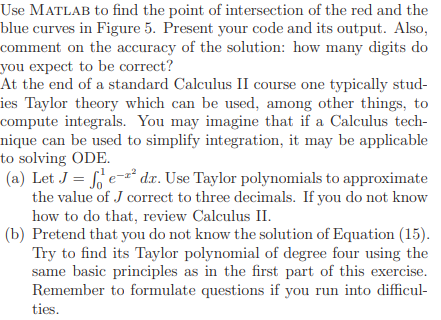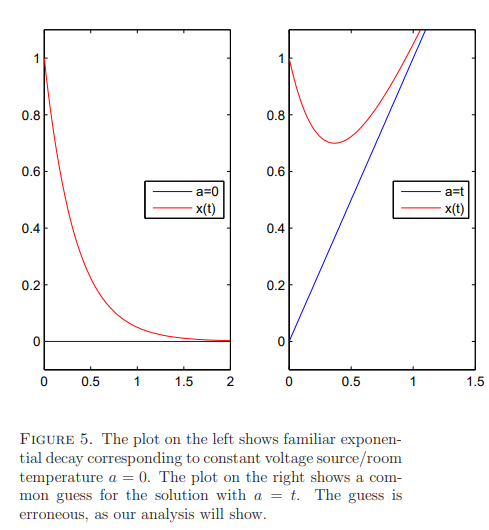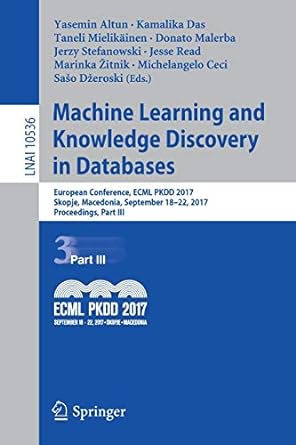Answered step by step
Verified Expert Solution
Question
1 Approved Answer
Figure 5: Use matlab if possible. Thanks :) Use MATLAB to find the point of intersection of the red and the blue curves in Figure

Figure 5:

Use matlab if possible. Thanks :)
Use MATLAB to find the point of intersection of the red and the blue curves in Figure 5. Present your code and its output. Also, comment on the accuracy of the solution: how many digits do you expect to be correct? At the end of a standard Calculus II course one typically stud- ies Taylor theory which can be used, among other things, to compute integrals. You may imagine that if a Calculus tech- mique can be used to simplify integration, it may be applicable to solving ODE. (a) Let J = |e-r* dr. Use Taylor polynomials to approximate the value of J correct to three decimals. If you do not know how to do that, review Calculus II. (b) Pretend that you do not know the solution of Equation (15). Try to find its Taylor polynomial of degree four using the same basic principles as in the first part of this exercise. Remember to formulate questions if you run into difficul- ties. 0 0.5 1 1.5 2 0 0.5 1 1.5 FIGURE 5. The plot on the left shows familiar exponen- tial decay corresponding to constant voltage source/room temperature a = 0. The plot on the right shows a com- mon guess for the solution with a = t. The guess is erroneous, as our analysis will show. Use MATLAB to find the point of intersection of the red and the blue curves in Figure 5. Present your code and its output. Also, comment on the accuracy of the solution: how many digits do you expect to be correct? At the end of a standard Calculus II course one typically stud- ies Taylor theory which can be used, among other things, to compute integrals. You may imagine that if a Calculus tech- mique can be used to simplify integration, it may be applicable to solving ODE. (a) Let J = |e-r* dr. Use Taylor polynomials to approximate the value of J correct to three decimals. If you do not know how to do that, review Calculus II. (b) Pretend that you do not know the solution of Equation (15). Try to find its Taylor polynomial of degree four using the same basic principles as in the first part of this exercise. Remember to formulate questions if you run into difficul- ties. 0 0.5 1 1.5 2 0 0.5 1 1.5 FIGURE 5. The plot on the left shows familiar exponen- tial decay corresponding to constant voltage source/room temperature a = 0. The plot on the right shows a com- mon guess for the solution with a = t. The guess is erroneous, as our analysis will showStep by Step Solution
There are 3 Steps involved in it
Step: 1

Get Instant Access to Expert-Tailored Solutions
See step-by-step solutions with expert insights and AI powered tools for academic success
Step: 2

Step: 3

Ace Your Homework with AI
Get the answers you need in no time with our AI-driven, step-by-step assistance
Get Started


